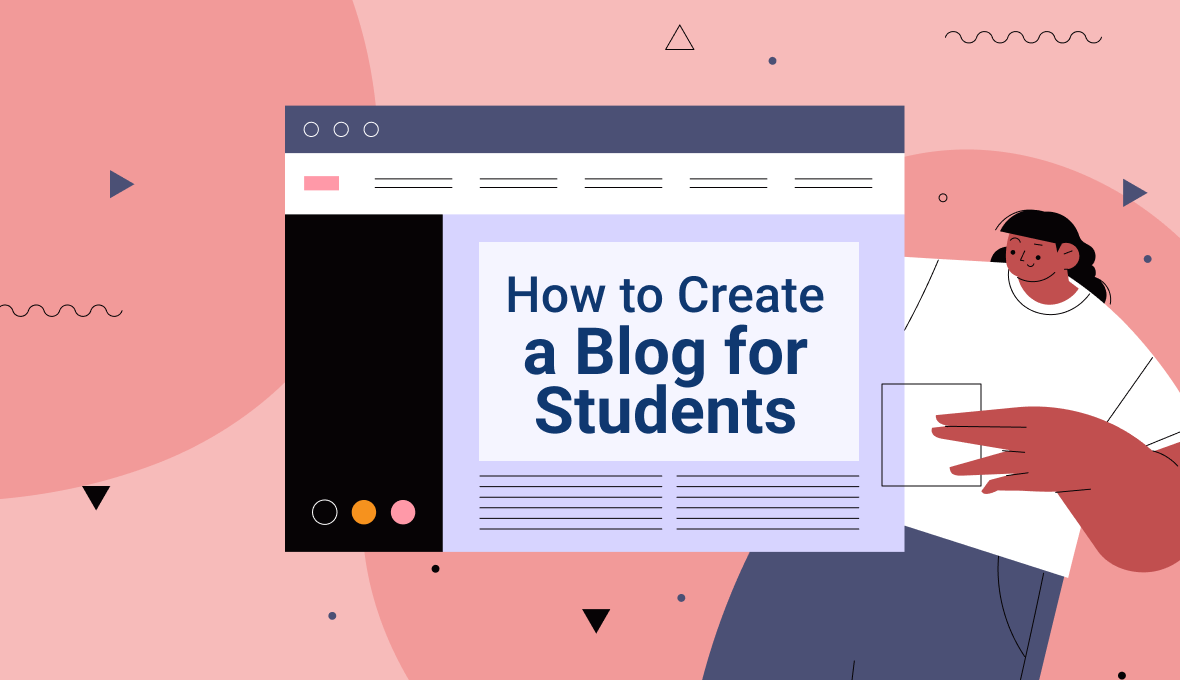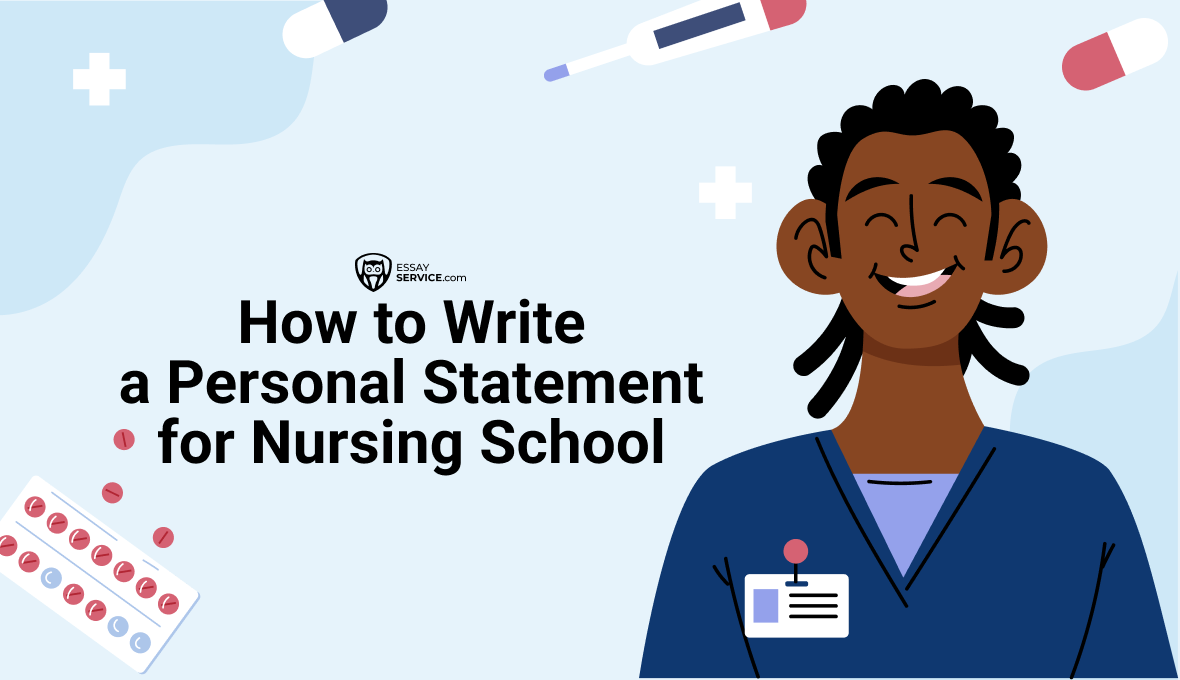
How to Create a Blog for Students: From Setup to Success
In today's digitally connected world, blogging has become a powerful tool for students to share their passions, experiences, and insights with a global audience. The growth of the blogosphere over the past decade has been nothing short of astonishing. To put it into perspective, did you know that there are now over 600 million blogs in existence worldwide?
This staggering number reflects the immense popularity and influence of blogging as a means of communication. It demonstrates that individuals from all walks of life, including students, have embraced the platform to express themselves, share their knowledge, and connect with like-minded people from across the globe. With such a vast and diverse community, there has never been a better time for students to learn how to write a blog post and start blogging online.
How to Create a Blog for Students: Short Description
Whether you're an aspiring writer, an enthusiast with a niche interest, or simply someone who loves to express themselves creatively, creating a blog can be a highly rewarding endeavor. In this article, our expert paper writers will take you through the essential steps to launch your very own student blog. From selecting the perfect niche and mastering the art of content creation and promotion to selecting the best place to start blog, this comprehensive guide is your key to joining the thriving community of student bloggers. Let's embark on this exciting journey together and unlock the potential of your digital voice.
What Is a Blog Post and Why It Matter for Students
Before we delve into the nuts and bolts of how to create a blog for students, let's start by understanding what a blog post is and why it's such a pivotal element in the blogging world.
Imagine your blog as a blank canvas waiting to be adorned with your thoughts, ideas, and experiences. Each individual piece of content you publish on your blog, whether it's about class and student blogging or any other topic, is a 'blog post.' It's like a digital journal entry or article that you share with the online world. These posts can range from short reflections to in-depth research papers, from personal anecdotes to how-to guides, and from creative stories to informative articles.
Now, why do blog posts matter so much, especially for students?
- Expression and Creativity: Blog posts offer you a creative outlet to express your thoughts and ideas. Whether you're passionate about literature, science, or fashion, or you're just writing a class blog, your project becomes your platform to showcase your unique perspective. It's a canvas where you can paint with words, images, and multimedia.
- Building a Digital Portfolio: In today's digitally-driven society, having an online presence is crucial. Your blog serves as a dynamic portfolio, showcasing your skills, knowledge, and interests. This can be immensely beneficial when applying for jobs or internships, as employers increasingly value candidates who can demonstrate their expertise through digital platforms.
- Skill Development: Blogging hones a variety of valuable skills. Writing, of course, is a primary one. But you'll also develop skills in research, communication, digital marketing, and even basic web design. These skills are not only beneficial for your blog but can be transferable to your academic and professional life.
- Connecting with a Global Audience: As a student blogger, your audience isn't confined to your campus or local community. Your reach is potentially global. This means you can connect with people from diverse backgrounds and cultures, gaining exposure to new ideas and perspectives.
- Personal Growth: Understanding how can you start a blog can be a journey of self-discovery. It challenges you to think critically, develop your voice, and become more organized and disciplined. It can boost your confidence as you see your ideas resonate with others and receive feedback.

The Steps Involved in Creating a Blog for Students
Creating a blog for students is an exciting venture that opens doors to self-expression, skill development, and connecting with a global audience. However, like any worthwhile endeavor, it requires careful planning and execution. In this guide, we'll walk you through each step of how to start a blog, from choosing your niche to designing your blog and crafting compelling content. Buckle up because, by the end, you'll be well-equipped to unleash your digital voice and make a mark in the college blogging world!
Choose A Niche
A. The Significance of Selecting the Right Niche
Choosing the right niche, much like the blog post format, is like setting the course for your blogging adventure. It's crucial because it determines the direction your blog will take and who your audience will be. Imagine a niche as the topic you're most passionate about or the subject you have a lot of knowledge about. When you blog about something you genuinely care about, your enthusiasm shines through in your writing. This makes it easier to keep your blog going and attract readers who share your interests.
B. Brainstorming Niche Ideas
Think of niche brainstorming as a treasure hunt for your blog's golden topic, like finding the perfect 'blog title.' Begin by making a list of things you love; whether it's a hobby, a subject you enjoy studying, or even a cause you're passionate about. Then, consider what might appeal to your potential readers. What questions or problems can you help them with? The intersection between your interests and your potential readers' needs is often where you'll find your perfect niche.
C. Assessing Personal Interests and Expertise
When it comes to being a blog creator for students, it's essential to play to your strengths. Assess what you're genuinely interested in and what you know a lot about. Are you an expert at cooking up delicious recipes, acing math problems, or offering fashion advice? Your personal interests and expertise in your role as a blog creator are your superpowers. Blogging about what you're knowledgeable and passionate about not only makes the writing process more enjoyable but also positions you as a credible source in your chosen niche. So, when you're selecting your niche as a blog creator for students, think about what lights your fire and where you can shine the brightest.
Plan Your Content
A. Creating a Content Strategy
Imagine your blog as a roadmap, and your content strategy, including how to 'create student blogs,' as the GPS that guides you along the way. Creating a content strategy is the compass that ensures your blog stays on track and reaches its destination. It involves defining the type of content you'll create, how often you'll post, and the themes or even fun blog topics you'll explore. This strategy keeps your blog organized and ensures that every post contributes to your overall goals.
B. Setting Content Goals and Objectives
Just like a student sets academic goals, your blog needs objectives to measure success. Setting content goals gives you a clear sense of purpose. Are you aiming to educate, entertain, or inspire your readers? Maybe you're considering blogging about your personal life. Are you looking to increase your blog's readership, engagement, or perhaps even monetization? Identifying these objectives helps you tailor your content to achieve them effectively.
C. Researching Competitors and Similar Blogs
Think of this step as your reconnaissance mission. By researching competitors and similar blogs, you gain insights into what's working in your niche and where there are opportunities for your unique voice. Analyze their content, engagement strategies, and the top blog subjects they cover. This research equips you with the knowledge to make informed decisions and stand out in a crowded blogosphere.
Select a Blogging Platform
A. Overview of Popular Blogging Platforms
In the world of writing blog posts, your choice of platform is akin to selecting the canvas for your masterpiece. There are several good places to start a blog, such as WordPress, Blogger, Medium, and more. Each of these platforms offers its own set of features and advantages. Your decision here will significantly impact your blogging experience and your blog's potential reach.
B. Comparing Features, Ease of Use, and Cost
Just like shopping for the perfect gadget, it's essential to weigh the features, ease of use, and cost of each platform. WordPress, for instance, is known for its flexibility and customization options but may require more technical know-how. Blogger, on the other hand, offers simplicity but with fewer customization possibilities. Medium provides an excellent user experience but with limited control over your content's presentation. Assessing these factors will help you find the platform that aligns with your blogging goals and technical comfort level.
C. Step-by-Step Guide to Setting Up a Blog on Your Chosen Platform
Once you've made your choice, it's time to roll up your sleeves and set up your blog on the selected platform. Think of this step as assembling the pieces of your blogging puzzle. From selecting a domain name to customizing your blog's appearance, make yourself equipped with all the know-how to transform your blogging vision into a reality.
Design Your Blog
A. Choosing a Blog Theme or Template
Think of your blog's theme or template, like places to write blogs, as the wardrobe for your digital persona. It's the first impression your readers will have of your blog. When selecting one, consider your niche and your personal style. Whether you prefer a sleek and minimalist look or something more vibrant and colorful, there's a theme out there that suits your blog's personality.
B. Customizing the Blog's Appearance
After choosing a theme, students create a unique and inviting atmosphere that resonates with their brand by customizing fonts, colors, layouts, and widgets. Think of this step as arranging the furniture in your new home.
C. Ensuring Mobile Responsiveness and User-Friendliness
In today's mobile-centric world, your blog must be accessible on various devices. Ensuring mobile responsiveness means that your blog looks and functions seamlessly on smartphones and tablets. A user-friendly design is essential for keeping readers engaged and coming back for more.
D. Incorporating Branding Elements (Logo, Color Scheme, etc.)
Branding isn't just for big corporations. It's a way to make your blog memorable and recognizable. Incorporate elements like a logo, color scheme, and consistent imagery that align with your niche and personality. These branding elements create a cohesive and professional look for your blog.
Create High-Quality Content
Imagine your blog posts as conversation starters at a lively gathering, each one representing your unique approach to blogging your way to captivate your audience. To make your content truly shine and stand out, here are some tips, even for your lifestyle blog post ideas:
- Compelling Introductions: Grab your readers' attention from the outset with a captivating hook or a thought-provoking question.
- Clear Structure: Organize your content into sections with subheadings. This helps readers navigate your posts easily.
- Use of Storytelling: We'll delve into the power of storytelling to make your blog posts more relatable and memorable.
- Concise and Scannable: Online readers often scan content. Learn how to make your posts scannable with bullet points, lists, and short paragraphs.
- Incorporate Data and Evidence: Back up your claims with facts, statistics, or personal anecdotes to add credibility to your writing.
- Call to Action (CTA): Encourage reader engagement with a clear CTA, whether it's asking a question, sharing their thoughts in the comments, or exploring related posts.
Sometimes, words alone can't fully express your ideas. That's where multimedia steps in as your visual storyteller. Here's what multimedia to incorporate into your blog posts:
- Selecting Relevant Images: Learn how to choose and attribute images that complement your content and engage your readers.
- Creating Engaging Videos: Explore how to create and embed videos to provide dynamic and interactive content.
- Designing Eye-catching Infographics: Discover tools and techniques for crafting infographics that simplify complex information.
Promote Your Blog
Think of social media as your blog's megaphone. To reach a wider audience, you'll want to master the art of social media promotion.
- Content Sharing: Discover the best practices for sharing your blog posts on platforms like Facebook, Twitter, Instagram, and LinkedIn.
- Engagement Strategies: Learn how to create meaningful interactions with your audience through comments, likes, and shares.
- Analytics and Tracking: Explore tools to measure your social media efforts and adjust your strategy for optimal results.
Blogging is a communal endeavor, and building connections can be invaluable. Here's what to consider:
- Blogger Outreach: Learn how to connect with fellow bloggers in your niche for collaborations, guest posts, or simply to share experiences.
- Student Blogger Communities: Discover online or blogging university communities where student bloggers unite, exchange ideas, and support one another.
Your blog's followers are your community, and email marketing is a direct line of communication:
- Building an Email List: Learn strategies to collect email addresses from your readers.
- Newsletter Creation: Discover how to craft engaging newsletters to keep your audience informed and engaged.
- Segmentation: Explore how to segment your email list for more personalized and effective communication.
While organic growth is fantastic, sometimes a boost is needed. So consider the following options:
- Paid Advertising Options: Explore different paid advertising channels like Google Ads, Facebook Ads, and Instagram promotion.
- Budgeting and ROI: Learn how to set budgets and measure the return on investment (ROI) for your advertising efforts.
Engage with Your Audience
Engaging with your audience is like having a conversation, not a monologue. When readers take the time to comment or provide feedback, respond promptly and thoughtfully. Acknowledging their input makes them feel valued and encourages further interaction.
Don't just preach; provoke discussions. Pose questions, share polls, and encourage readers to share their perspectives. The more you foster an interactive environment, the more vibrant and engaging your blog becomes.
Transform your student blogging into a hub where like-minded individuals connect. Consider forums, social media groups, or exclusive memberships. Building a community not only strengthens reader loyalty but also amplifies your blog's impact in the digital world.
Monetization Strategies
So, you've put in the hours, crafted captivating content, and built a dedicated audience for your blog. Now, you might be wondering how to make money from blogging. Well, it's time to discuss the exciting realm of monetization strategies that can turn your passion into a profitable venture. Here are three potent avenues to explore for your university blogging endeavors:
1. Advertisements
Picture this: Your blog is a bustling street, and advertisers are businesses vying for attention in this bustling marketplace. They're willing to pay you for a prime spot to showcase their wares. Enter advertisements, the classic way to monetize your blog.
How it works: You sign up with ad networks like Google AdSense or Media.net, which serve ads relevant to your content. When your readers click on these ads or view them, you earn a portion of the advertiser's budget. The more visitors you have, the greater your potential earnings.
Pro tip: Balance is key. Too many ads can overwhelm your readers, so aim for a harmonious blend that enhances, rather than detracts from, the user experience.
2. Affiliate Marketing
Think of affiliate marketing as your blog's partnership program. You align with brands whose products or services resonate with your niche and audience. When you promote their offerings, and your readers make purchases through your unique affiliate links, you earn a commission.
Success strategy: Choose affiliates that genuinely align with your blog's theme and interests. Your recommendations should be authentic and trusted, making your audience more likely to convert.
3. Sponsored Posts
Imagine receiving a generous payment for writing about a product, service, or experience you genuinely enjoy. That's the essence of sponsored posts. Brands approach you to create content that showcases their offerings to your readers.
The secret sauce: Transparency is crucial. Always disclose when a post is sponsored. Authenticity builds trust with your audience, and they'll appreciate your honesty.
B. The Importance of Ethical Monetization Practices
While exploring these money-making opportunities, it's vital to maintain ethical standards. Your readers are your most valuable asset, and ethical monetization practices help you preserve their trust and loyalty.
1. Honesty is Non-Negotiable
Your readers trust your recommendations. If you're promoting something solely for profit, be upfront about it. Disclose sponsored content and affiliate relationships clearly. Honesty not only builds trust but also ensures compliance with legal regulations.
2. Quality Over Quantity
Don't compromise the quality of your content for the sake of ads or promotions. Your blog's reputation relies on delivering value to your audience. Keep your content informative, engaging, and true to your niche.
3. Audience-Centric Approach
Always prioritize your readers' interests. Choose monetization strategies that align with their needs and preferences. If your blog loses its appeal by becoming overly commercialized, you risk alienating your audience.
4. Diversify Your Income Streams
Relying on a single source of income is risky. Diversify your monetization strategies to safeguard all your student blogs' financial stability. This not only hedges against fluctuations but also offers more earning potential.
Analyzing and Improving
After learning how to write a blog post, the next step is to scrutinize and enhance it. Imagine having a dashboard that unveils the secrets of your blog's success. Analytics tools provide just that. They let you peek behind the curtain and understand what's working and what's not.
Key Metrics to Monitor:
- Traffic: Keep an eye on your website traffic, and check student posts and comments. Are there spikes or dips? Analyze why.
- Audience Demographics: Who's reading your blog? Knowing your audience helps tailor content.
- Bounce Rate: High bounce rates indicate content that may need improvement.
- Conversion Rate: Track how many readers take desired actions, like signing up or buying.
Analytics tools like Google Analytics or WordPress Insights can provide invaluable insights into your blog's performance, helping you make informed decisions.
Data isn't just numbers; it's your compass for content improvement. When you dive into the analytics, patterns emerge, telling you what resonates with your audience.
Strategies:
- Identify Top-Performing Content: What are your most popular posts? Replicate their success.
- Study User Behavior: Analyze how users navigate your site. Optimize the user journey.
- Keyword Analysis: Use tools like SEMrush or Ahrefs to discover high-value keywords.
Blogging is a dynamic field, and staying ahead of the curve is essential. Technology evolves, and trends come and go. Here's how to keep up:
Actions to Take:
- Follow Industry Leaders: Subscribe to podcasts or find some good blogs to read by experts in your niche.
- Attend Webinars and Conferences: These are goldmines for the latest trends.
- Experiment with New Tools: Embrace emerging blogging tools and platforms.
FAQ
How Long Does It Take to Write a Blog Post?
The time it takes to write a blog post can vary widely depending on factors like length, complexity, research required, and the writer's experience. On average, a straightforward 500-800 word blog post might take 2-4 hours to write. However, longer, more in-depth posts or those requiring extensive research can take several hours to even a few days to complete. It ultimately depends on the specific content and the writer's efficiency. Meanwhile, you can also consider the option to pay someone to write your paper and take care of your coursework, allowing you to kickstart your blog with more ease!
How Long Should a Blog Post Be?
The ideal length for a blog post can vary based on your goals, audience, and content. However, a common guideline is to aim for a minimum of 1,000 words. This length typically allows you to cover a topic in sufficient depth and provide value to your readers. Longer posts (around 1,500 to 2,500 words or more) can perform well in terms of SEO and audience engagement, as they often provide more comprehensive information.
Ultimately, the length should serve the content's purpose. Some topics, like ones on class blogs, may require shorter, more concise posts, while others may benefit from longer, more detailed articles. Focus on delivering valuable and relevant content, and let that guide the appropriate length for your own blogs.
That's a Wrap-Up
Mastering how to do blogging as a student can be a rewarding journey. It's your platform to share your voice, showcase your expertise, and connect with a global audience. With the right steps and a dose of creativity, you're well on your way to blogging success. So, start writing, stay inspired, and watch your ideas flourish in the digital world. And if you'd also want to learn how to start a successful student-run podcast, we've got valuable tips for that as well!
Frequently asked questions
New posts to your inbox!
Your submission has been received!



.webp)